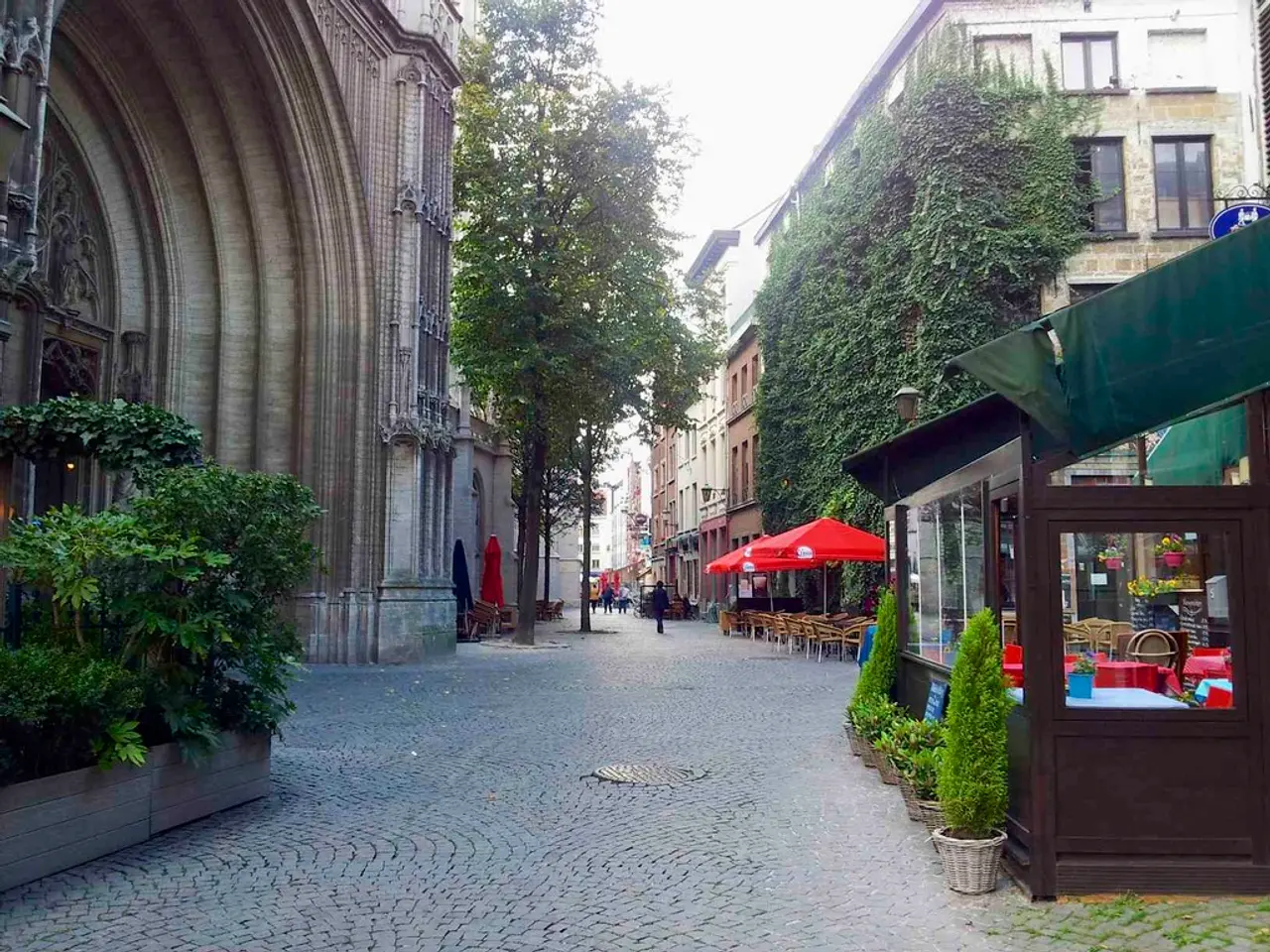Urban Planning Prioritizes Pedestrians in German Cities, Proving Beneficial for All
In the heart of Europe, Germany is setting a new standard for urban living, with its cities designed to prioritise pedestrians and promote a healthier, more equitable, and sustainable lifestyle. The Deutschlandticket, a monthly travel pass offering access to bus, tram, train, or U-Bahn in Berlin, is just one example of this shift.
While the US continues to hold a strong car culture, German cities like Berlin and Munich are leading the way in creating car-free zones and promoting sustainable mobility. In Berlin, the city is working towards establishing the largest car-free area globally, surpassing Manhattan in size. This initiative, driven by public welfare, health, environmental protection, and climate goals, showcases the local support for reducing car dominance.
Berlin has also passed Germany’s first cycling strategy bill, inspired by the successful Dutch city Groningen’s quadrant urban plan. This plan prioritises non-motorized transport, proving that car-free exploration is viable. Moreover, cities like Stuttgart exemplify inclusive urban planning with detailed accessibility guides for people with disabilities, ensuring mobility on foot for all residents.
These pedestrian-friendly policies bring numerous benefits compared to the US. They promote improved public health and fitness due to higher walking and biking rates, reduce pollution and greenhouse gas emissions, enhance social equity and accessibility, increase community cohesion and neighbourhood security, create more attractive and livable public spaces, and offer economic benefits.
However, challenges remain. People with disabilities may face difficulties using public transport in German cities, and some underground stations in Berlin's U-Bahn network are not accessible for people with mobility issues. Construction works in German cities, including Berlin, can also cause issues for pedestrians by blocking walkways.
Despite these challenges, the allure of driving without a speed limit on the Autobahn is offset by the city's design prioritising pedestrians. Many people in German cities don't need to own a car due to the extensive public transport network and walkability. This, combined with the cultural richness and history that walking allows one to explore, makes living in cities like Berlin an enjoyable experience.
The author finds the culture of walking in German cities particularly appealing. Yet, cars remain a significant part of people's lives in these cities. However, the city's design prioritising pedestrians can still lead to a more sustainable future.
In contrast, many US cities still prioritise automobile travel, with sprawling development that limits pedestrian options and exacerbates pollution and inequity. Germany’s focus on car-free zones, cycling, and universal accessibility creates a more sustainable, equitable, and pleasant urban experience for residents.
References:
- Berlin's Cycling Strategy
- Pedestrian-Friendly Cities: Benefits and Challenges
- Barrier-Free Design in Stuttgart
- Sustainable Urban Mobility in the US
- In Germany, the focus on sustainable mobility has extended to environmental science, with Berlin leading the way in creating car-free zones that align with health-and-wellness initiatives, promoting fitness-and-exercise through increased walking and cycling.
- This shift in urban planning is also impacting the lifestyle of its residents, as they enjoy the benefits of reduced pollution, greener environment, and enhanced quality of life in pedestrian-friendly cities like Berlin, Munich, and Stuttgart.
- The movement towards more sustainable urban designs addresses climate change by lowering greenhouse gas emissions, making it a critical element of the environmental-science sector and the home-and-garden movement, aiming for a healthier planet and sustainable living spaces.





